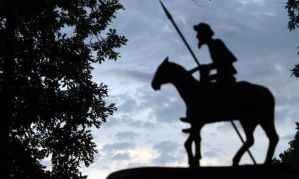Soon our teachers and students will be celebrating the huge influence both men have exerted on our culture and language. To celebrate their deaths there is no better option than go back to their texts and appreciate their talent, depicted in some of their most famous quotes:
“It is not in the stars to hold our destiny but in ourselves.”(Julius Caesar)
“Go wisely and go slowly. Those who rush stumble and fall.” (Romeo and Juliet)
“Strong reasons make strong actions.”(King John)
“We know what we are but know not what we may be.” (Hamlet)
“Things won are done; joy’s soul lies in the doing.”(Troilus and Cressida)
“La libertad, Sancho, es uno de los más preciados dones que a los hombres dieran los cielos” (El ingenioso hidalgo Don Quijote de la Mancha)
“La senda de la virtud es muy estrecha, y el camino del vicio, ancho y espacioso” (El ingenioso hidalgo Don Quijote de la Mancha)
“La verdad adelgaza y no quiebra, y siempre anda sobre la mentira como el aceite sobre el agua.” (El ingenioso hidalgo Don Quijote de la Mancha)
“Amor y deseo son dos cosas diferentes; que no todo lo que se ama se desea, ni todo lo que se desea se ama.” (La Galatea)



